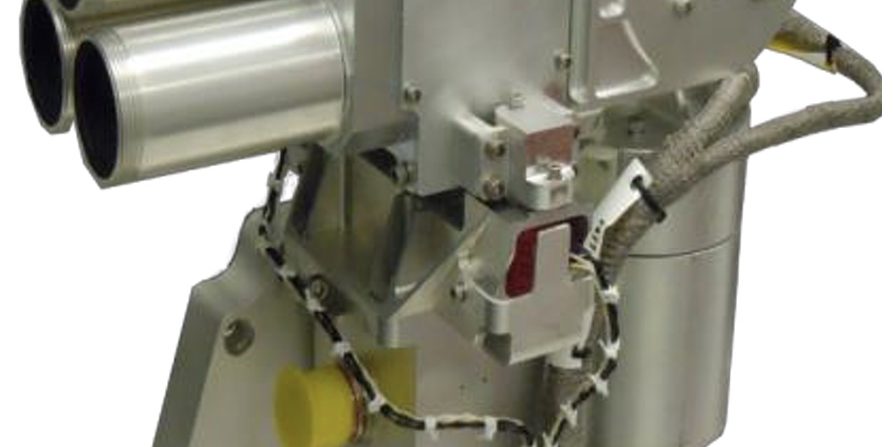Facts
| Mobility | Space-based sensors hosted on commercial satellites |
| Role | Sensors to detect, measure, and assess kinetic kill |
| Status | Network of sensors deployed |
| Producer | John Hopkins University Applied Physics Laboratory |
Overview
The Spacebased Kill Assessment (SKA) system is a network of small sensors hosted on commercial satellites. The individual sensors house three infrared detectors used to collect the energy signature of the impact between a threat ballistic missile and an interceptor of the Ballistic Missile Defense System. As of October 2020, the SKA system was on orbit and executing planned test events. [1]
In Fiscal Year 2014 several events prompted the Missile Defense Agency to start the SKA project. The Fiscal Year 2014 National Defense Authorization Act directed the Missile Defense Agency to address hit and kill assessment for the Ballistic Missile Defense System. An internal study on space highlighted strategies that could provide sensor capabilities at lower price points. In addition an opportunity for hosting sensors on commercial space platforms became available. In April 2014 after coordination with the combatant commands and Congressional staff, the Missile Defense Agency began the SKA project.
While SKA is still not operational, the FY23 budget request includes $27M to continue integrating SKA into the overall missile defense system. An on-orbit checkout was completed in 2019, and the system successfully performed during several recent MDA flight tests focused on its hit assessment capability. [9]
Capabilities crucial to the Ballistic Missile Defense System
- Capability provided by network of sensors
- Real time tasking and reporting SKA Sensor Assembly
- Multi-spectral sensor with three fast frame infrared detectors capable of capturing the intercept signature
- Connected to BMDS command and control elements for tasking and reporting
- SKA data can be fused with radar data for integrated, multi-phenomenology assessments
SKA is important to materiel developers like the Missile Defense Agency for several reasons
Real world example of rapid development and fielding
- Innovative acquisition processes delivered first payload on orbit in half the time of traditional space programs
- Rapid commercial launches provided full capability in months, not years
Case study for how to contain development costs
- Constrained schedule avoids #1 cost driver of space programs: people x time
- Purchasing services on-orbit avoids development and integration costs
Once in orbit, SKA sensors will provide accurate and timely kill assessment data to missile defense command and control nodes. Ultimately, this improved kill assessment capability will reduce the number of interceptors needed to neutralize a ballistic missile threat, cutting costs for interceptors and improving situational awareness regarding an incoming threat.
Each SKA sensor consists of three single-pixel photodiode detectors that measure electro-optical signatures emitted during collisions between ballistic missiles and missile defense interceptors.[2] Using information provided by command and control, SKA sensors will point towards an expected intercept point to observe the visible and infrared light produced by the collision of intercept.[3] Information attained during intercept include kill assessment, type of threat warhead (i.e. nuclear, high-explosive, chemical, or biological), and post-collision lethality of threat warhead.[4]
The SKA experiment was initiated following a mandate in the FY2014 National Defense Authorization Act (NDAA) calling for the Missile Defense Agency (MDA) to address hit and kill assessment for the BMDS, specifically for testing of the Ground-based Midcourse Defense system.[5] In April 2014, MDA began the SKA experiment.[6] The network of SKA sensors put in orbit by the end of 2018 and are expected to remain operational for more than 10 years.[7] SKA sensors initially will be operated by the John Hopkins University Applied Physics Laboratory, however, operational command eventually will transition to the Missile Defense Integration and Operations Center in Colorado Springs, Colorado.[8]
Sources
[1] https://www.mda.mil/global/documents/pdf/ska.pdf
[2] https://mostlymissiledefense.com/2016/08/09/mdas-space-based-kill-assessment-ska-experiment-august-9-2016/.
[3] https://mostlymissiledefense.com/2016/08/09/mdas-space-based-kill-assessment-ska-experiment-august-9-2016/.
[4] https://mostlymissiledefense.com/2016/08/09/mdas-space-based-kill-assessment-ska-experiment-august-9-2016/.
[5] https://www.mda.mil/faqs/faq_ska.html.
[6] https://www.mda.mil/faqs/faq_ska.html.
[7] https://www.mda.mil/faqs/faq_ska.html.

